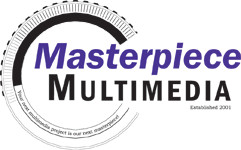You have all your pictures, you want to make them digital. You have a scanner, a cup of coffee and lots of free time. Now what? How do you know what settings to set? Scanner setting are measured in resolution. Each horizontal line that is scanned is measured in dots per square inch or dpi. Although to be honest, dpi is just an industry term, in scanning the reality is it is pixels, not dot. Dots were a 1980’s term.
Each scanner is going to be rated for a top dpi. Typically 1200 dpi, yet some will go to 4800 dpi. Hands down the best way to scan your photos or documents is the highest resolution possible of the scanner. This will allow the scanner to capture the image at its native dpi. Anything lower, the scanner is forced to compress the file to your desired resolution. However, the time to make these scans will be painful. So some reduction is likely in your future. Another factor is to not use oddball resolution options. For instance, if the max resolution of the scanner is 600 dpi, don’t set the scan at 230 dpi. This becomes an odd math equation and slows things down. It also causes unusual resolution. The best bet would be 50, 100, 200 or 300 dpi in this scenario.
Professional scanners with expensive hardware can process high resolutions very quickly and utilize connected software to complete the resampling process quickly. However more commercially available scanners will likely scan so slow that you will want to find some other form of entertainment while you are scanning or you will give up very fast.
The likelihood is that you are digitizing your pictures to be viewed and shared electronically on the web. Places like google, facebook, Instagram and the like are very content with medium sized resolution. Something like 300 dpi. Many of the social media sites will actually re-sample the resolution of your photo anyway when you upload it. However, if you are scanning something so you can fix it and re-print it, the higher the resolution the better.
Our suggestion is to always scan high, compress later. When you scan the photos, keep them at the high resolution. This way you have the flexibility to do anything with them you may need. But when you want to share, or use in other ways, you can make a duplicate copy of the files, compress them and share them easily. You also get the most detail out of your scan to begin with. Lower resolution scans will miss some of the detail. However, the highest you really need to go for photographic prints is 1200 dpi. Any higher and you aren’t really getting any benefit. Our standard in the stores is 600 dpi. You get the best middle ground between file size and resolution. However, sometimes with really small 3×3 images, the better option is the 1200 dpi.
File size will be something you need to keep in mind. How big will the file size be? It depends on the size of the image and the dpi. Fortunately, most people will be scanning images 8×10 or smaller and file sizes, even at 1200 dpi are manageable. Ultimately, the final file size will be determined by the dpi and the size of the picture. Every line of resolution will add to the file size. Most flash drives are no smaller then a few GB now and will hold thousands of 8×10 images at 600dpi.
We will typically go to JPEG file as this is the most versatile for our customers. However, RAW or TIFF files are often available output by scanner software. If you want to do some serious editing, RAW images are the way to go. But JPEG is by and large the standard.
Happy Scanning!
